Story of Seasons, known in Japan as Bokujō Monogatari and formerly known as Harvest Moon, is an agricultural farming life simulation video game series created by Yasuhiro Wada and developed by Victor Interactive Software. Story of Seasons was the first game to be released under the new international series title of the same name.

Harvest Moon: A Wonderful Life is a video game that was released in Japan in September 2003 and March 2004 in North America for the GameCube. It was developed and published by Marvelous Interactive, and is part of the long-running Story of Seasons series of video games. The GameCube version offers connectivity with the Game Boy Advance game, Harvest Moon: Friends of Mineral Town.

Harvest Moon 64, released in Japan as Bokujō Monogatari 2 (牧場物語2), is a 1999 farm simulation video game developed by Victor Interactive Software for the Nintendo 64 console. It was published by Victor Interactive in Japan and by Natsume Inc. in North America. It is the third game in the Story of Seasons series.

Harvest Moon, known in Japan as Farm Story, is a farm simulation role-playing video game developed by Amccus for the Super Nintendo Entertainment System. The game first was released in Japan by Pack-In-Video in 1996, in North America by Natsume Inc. in 1997, and in Europe by Nintendo in 1998. The European version shipped with language localizations for Germany and France. It is the first game in the long-running Story of Seasons video game series, previously known as the Harvest Moon series in western territories. The game has been re-released on the Satellaview, Nintendo 3DS, Wii, Wii U and Nintendo Switch.

Harvest Moon 2 GBC, released in Japan as Bokujō Monogatari GB2 (牧場物語GB2), is a farm simulation video game for the Game Boy Color developed and published by Victor Interactive Software, and the second portable game in the Story of Seasons series. The object of the game is to cultivate a farm to prevent the land from being used to build an amusement park. As with the previous game, the player may choose to play as a boy or a girl.

Harvest Moon 3 GBC is a farm simulation video game for the Game Boy Color developed and published by Victor Interactive Software, part of the long-running Story of Seasons series of video games. The game was released for the Nintendo 3DS via Virtual Console in North America on December 11, 2014.

Harvest Moon: Back to Nature, known in Japan as Bokujō Monogatari Harvest Moon, is a video game in the farm simulation series Story of Seasons, developed and published by Victor Interactive Software. It is the first Harvest Moon game for a non-Nintendo console. Characters from Harvest Moon 64 were transferred to be the characters in this game, although with new lifestyles, personalities, and relatives.

Harvest Moon: Magical Melody is a social simulation video game for the GameCube developed by Marvelous Interactive. It is an updated version of Bokujō Monogatari: Shiawase no Uta, which was released on March 3, 2005 in Japan. The updated GameCube version was released in the United States by Natsume Inc. on March 28, 2006.

Rune Factory: A Fantasy Harvest Moon is a simulation role-playing video game developed by Neverland and published by Marvelous Interactive Inc., Natsume Inc., and Rising Star Games for the Nintendo DS handheld video game console.
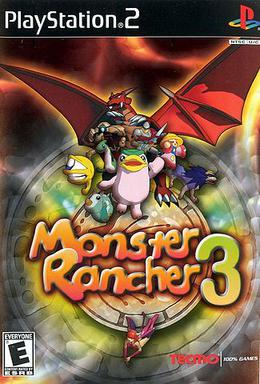
Monster Rancher 3 is the third game in Tecmo's Monster Rancher series. It is the first game in the series for the PlayStation 2.

Harvest Moon DS: Island of Happiness, known simply as Harvest Moon: Island of Happiness, and known in Japan as Bokujō Monogatari: Kimi to Sodatsu Shima, is a farm simulation video game published and developed by Marvelous Interactive Inc. in Japan, and released in North America by Natsume Inc. exclusively for the Nintendo DS. It is the third installment of the Story of Seasons series on the DS. It is the first entry without series creator Yasuhiro Wada involved.
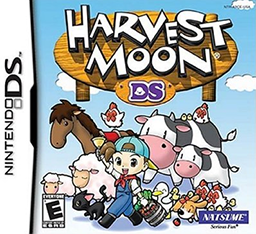
Harvest Moon DS, known in Japan as Bokujō Monogatari: Colobocle Station, is a farm simulation role-playing video game for the Nintendo DS, part of the Story of Seasons series. It was published and developed by Marvelous Interactive Inc., and released in Japan on March 17, 2005, and in North America on September 12, 2006. It is the first entry in the series without series creator Yasuhiro Wada heavily involved, though it borrows many assets from Harvest Moon: Friends of Mineral Town and Harvest Moon: A Wonderful Life, such as the graphical style from the former and setting of the latter.

Harvest Moon: Tree of Tranquility is a farming simulation video game released in Japan on June 7, 2007, by Marvelous Interactive, in North America on September 30, 2008, by Natsume Inc., and in the PAL regions in October 2009. It was released for Nintendo Wii console and was the first title in the Story of Seasons series originally developed for the Wii. The video game was followed by a sequel, Harvest Moon: Animal Parade, one year later.

Innocent Life: A Futuristic Harvest Moon, also known as Harvest Moon: Innocent Life, is a 2006 farming simulation video game for the PlayStation Portable (PSP). It is a spin-off of the Story of Seasons series of games, and was released on April 27, 2006, in Japan and in 2007 for the rest of the world.

Harvest Moon DS: Sunshine Islands, is a video game that was released on February 21, 2008 in Japan and November 10, 2009 in North America. The seventeenth installment of the Story of Seasons series, and the fourth available for the Nintendo DS, the game closely resembles Harvest Moon DS: Island of Happiness; a section of the island from Harvest Moon: Island of Happiness is one of multiple islands in this game. The player can choose to be a boy (Mark) or a girl (Chelsea).
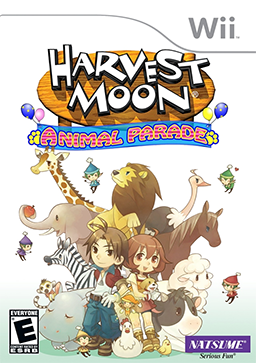
Harvest Moon: Animal Parade is a farming simulation role-playing game by Marvelous Entertainment released for Nintendo's Wii console. It is the second title for the Wii in the Story of Seasons series, and has the same characters as Harvest Moon: Tree of Tranquility. It features many animals, all of which the player can ride, including circus animals.
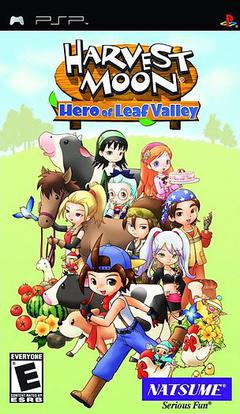
Harvest Moon: Hero of Leaf Valley, known in Japan as Bokujō Monogatari: Sugar Mura to Minna no Negai, is a video game in the farm simulation series Harvest Moon for PlayStation Portable, developed by Marvelous Interactive Inc. and published by Natsume Inc. in the U.S. It was released on March 19, 2009 in Japan and on April 26, 2010 in North America.

Harvest Moon: My Little Shop is a video game developed by h.a.n.d. Inc. It was released for the Wii via Nintendo's WiiWare service.
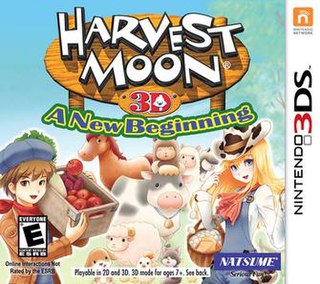
Harvest Moon 3D: A New Beginning is a game for the Nintendo 3DS released by Natsume Inc. It is the last entry in the franchise released on the Nintendo 3DS systems to receive the title of Harvest Moon.


















